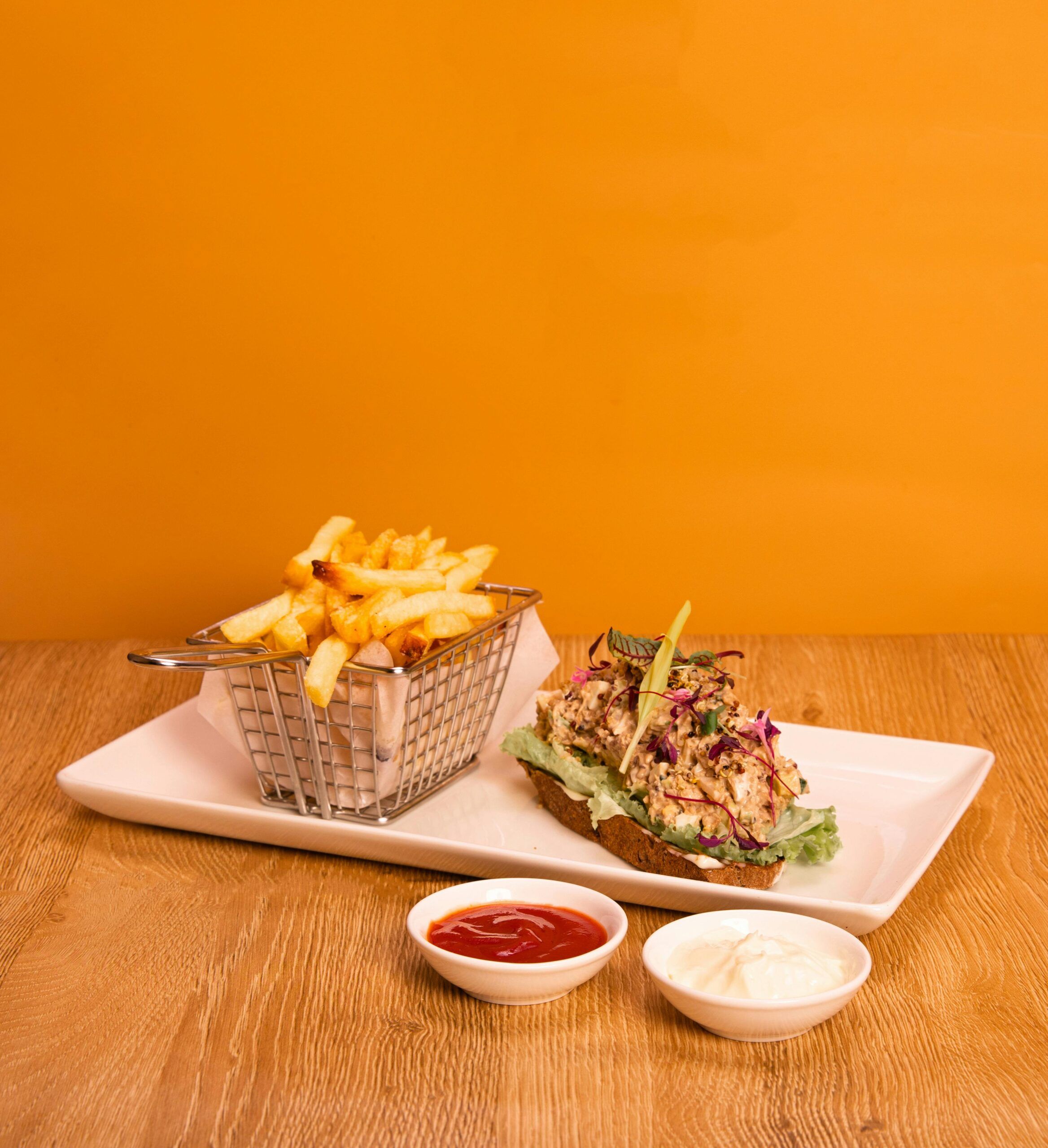- Work on your Restaurant Culture
- Improve the Back of House Work Environment
- Evaluate and Train Front of House Staff Properly
- Create an Efficient Restaurant Schedule
- Make sure Your Menu is Scalable
- Invest in the Right Technology
- Monitor Food Cost and Waste Closely
- Have a Centralized Communication System
- Implement Consistent Quality Control Procedures
- Keep Detailed Records of Everything
Congratulations on your success in the restaurant industry! With multiple locations up and running, you now face the unique challenge of managing a restaurant chain. While there are many similarities between managing a single restaurant and managing a chain, there are also some big differences to keep in mind.
As the owner of a restaurant chain, it is essential to have a solid plan for restaurant management. This includes everything, from hiring and training staff to set menus and pricing. While each restaurant in your chain will have unique needs, some basic principles of restaurant management should be followed in all locations.
There are many moving parts to keep track of; if one thing goes wrong, it can cascade through the entire system. However, there are some effective strategies that restaurant managers can use to keep their business running smoothly.
Orders has prepared a list of 10 tips for managing a chain restaurant. Keep reading this post, as these tips are crucial for success!
1. Work on your Restaurant Culture
In today’s business world, having a strong culture within your restaurant chain is more important than ever. Culture is the values, beliefs, and behaviors that make up the character of an organization.
It makes your restaurant chain unique and sets it apart from the competition. A strong culture helps to attract and retain talent, build customer loyalty, and drive business results. Here are some good tips for building a strong culture in your restaurant chain:
Clearly define your values and beliefs.
What does your restaurant stand for? What are your core values? Make sure these are clearly defined and communicated to everyone in the organization.
Hire for cultural fit.
When you’re hiring new employees, don’t just look for the skills and experience they possess. Also, look for candidates who share your values and who will fit in with the existing culture.
Foster a collaborative environment.
Encourage your employees to work together and support one another. Create opportunities to interact socially so they can get to know each other personally.
Promote a customer-centric focus.
Train employees to always put the customer first. Make sure they understand the importance of providing exceptional service.
Recognize and reward employees who exemplify your cultural values.
Celebrate employees who live and breathe your culture every day. Let them feel they are appreciated and that their efforts are making a difference.
By focusing on culture, you can create a strong foundation for your restaurant chain that will help you attract and retain talent, build customer loyalty, and drive business results.
2. Improve the Back of House Work Environment
If you’re looking to improve your chain restaurant efficiency, look no further than the back of the house. The kitchen is always the heart of any restaurant, and ensuring it runs smoothly is essential to keeping your customers happy. Here are a few great tips to help you get the most out of your back of the house:
Encourage communication:
A well-run kitchen depends on clear communication between all team members. Encourage your team to speak up if they have any questions or concerns.
Streamline processes:
Take a close look at your kitchen procedures and see if any areas can be streamlined. Even minor changes can make a big difference in the efficiency of your kitchen.
Focus on lighting:
Many restaurants are dimly lit, making it difficult for employees to see what they’re doing. This can lead to mistakes and accidents. By providing adequate lighting, you can reduce the number of errors and make it easier for employees to do their job.
Promote a team mentality:
Everyone in the kitchen must understand that they’re part of a team. Encourage collaboration and brainstorming, and make sure everyone knows their input is valued.
By following these helpful tips, you can create a more efficient and productive back-of-house work environment. As a result, you’ll be able to provide better service to your customers and improve your bottom line.
3. Evaluate and Train Front of House Staff Properly
And your front-of-house staff are just as crucial as your back-of-house staff. They’re the ones who interact directly with customers, so they must be properly trained and able to provide excellent customer service.
Here are a few tips to help you ensure your front-of-house staff is providing the best possible experience for your customers:
Make sure you’re hiring the right people. When it comes to customer-facing positions, it’s important to hire employees who are friendly, outgoing, and have a positive attitude. They should also be able to think on their feet and handle difficult situations gracefully.
Once you’ve hired the right people, proper training is essential. In addition to learning about your menu and how to properly take orders, your front-of-house staff should also be trained in basic customer service principles. This will help them resolve any issues that may arise during a shift.
Evaluate your staff regularly. It’s vital to constantly check in with your front-of-house staff to ensure they’re meeting your expectations. One way to do this is through customer surveys. You can also ask your manager to pop in and observe shifts from time to time.
Be willing to make changes. If you find that your front-of-house staff is consistently falling short, don’t be afraid to make changes. Whether that means additional training or letting someone go, you must take action, so your customers always have a great experience at your restaurant.
4. Create an Efficient Restaurant Schedule
As the owner or manager of a restaurant chain, it’s important to ensure that each location runs as efficiently as possible. One key element of a successful restaurant is a well-organized schedule. By creating a schedule that maximizes efficiency and wasted time, you can help ensure that your restaurants are running smoothly and meeting customer needs.
Keep in your mind these tips when creating an efficient restaurant schedule:
- Start by mapping out the typical flow of customers throughout the day. This will help you identify busy times and slow periods.
- Based on the customer flow, determine how many staff members you need during each shift. Make sure to schedule enough employees to meet customer demand, but avoid scheduling too many, so you’re not wasting labor costs.
- Once you know the staffing levels you’ll need, start mapping out employee shifts. Again, aim for efficiency by avoiding gaps in coverage and overlapping shifts.
- Once your shifts are finalized, communicate the schedule to all employees well in advance. This will help avoid confusion and last-minute changes.
- To further maximize efficiency, consider using employee self-scheduling software. This type of software allows employees to select their shift preferences, which can help create a more efficient schedule overall.
Your Inbox, Your Rules!
Tailor your newsletter with the topics you're most interested in.
5. Make sure Your Menu is Scalable
When scaling your restaurant menu, the first thing to consider is whether your recipes are scalable. In other words, can they be easily multiplied or divided to accommodate different group sizes?
If not, then you’ll need to make some adjustments. One method to do this is to standardize your portion sizes. For example, if you typically serve each entrée with a side of mashed potatoes, ensure each serving is the same size. This will make it easier to multiply or divide your recipes as needed.
Another thing to consider is the cost of your ingredients. When you’re scaling up your menu, you’ll need to purchase larger quantities of ingredients. This can sometimes be more expensive, so it’s important to keep an eye on your budget.
You may need to adjust your recipes to stay within your budget. For example, if you typically use fresh produce in your dishes, you may want to switch to frozen or canned fruits and vegetables when scaling up your menu.
Finally, think about how you’ll prepare your dishes for larger groups. If you’re used to cooking for smaller groups, you may need to invest in some additional kitchen equipment or hire additional staff members to accommodate a larger menu.
But with a little planning and preparation, you can successfully scale up your restaurant menu without any problems.
6. Invest in the Right Technology
As a restaurant manager, you know technology is essential to running a successful restaurant business. The right technology can help you streamline operations, improve customer service, and boost profits from point-of-sale systems to online ordering and reservations.
But with so many choices there, it can be hard to know where to invest your limited budget. Here are 3 good tips to help you select the right technology for your restaurant chain:
Consider your specific needs. What type of technology will help you achieve your goals? For example, investing in a POS system or online ordering platform may be a good idea if you’re looking to improve efficiency. Or, if you want to enhance the customer experience, you might want to consider reserving tables or adding a mobile app.
Don’t be afraid to splurge on quality. When it comes to restaurant technology, going cheap can often backfire. Not only is low-quality equipment more likely to break down or malfunction, but it can also create headaches for your staff and customers. Instead of skimping on quality, look for reliable brands that offer comprehensive warranties and support services.
Keep future needs in mind. As your restaurant grows and evolves, your technology needs will also change. Make sure you choose a platform that can be easily expanded or updated as your business grows.
Investing in the proper technology from the beginning can set your restaurant up for success now and in the future.
7. Monitor Food Cost and Waste Closely
No matter how big or small your chain restaurant may be, it is important to monitor food costs and waste closely. By keeping a close eye on these two things, you can ensure that your restaurants run as efficiently as possible.
One of the greatest methods to monitor food costs is to have a dedicated person in each restaurant responsible for ordering and inventory management. This person should understand your menu well and what ingredients are needed for each dish. They should also be aware of any specials or promotions that might be running. By having this dedicated person, you can be sure that food cost is being monitored closely.
Waste is another part that needs to be monitored closely. There are many ways to reduce waste in your restaurants, such as using portion control, seasonal produce, and sustainable practices. By reducing food waste, you will save money and make your restaurant business more environmentally friendly.
Monitoring food costs and waste closely is essential for any restaurant chain. By doing so, you can have peace of mind that your restaurants are running efficiently and are providing quality food to your customers.
8. Have a Centralized Communication System
If you manage a restaurant chain, you know how important it is to have a centralized communication system. This will allow you to stay in touch with all your locations and ensure that everyone is on the same page.
- Use a cloud-based system: This will allow you to access your communications from anywhere in the world.
- Ensure your employees can access the system: This gives them passwords and permissions.
- Train your employees on how to use the system: You don’t want anyone left in the dark.
- Use the system to send out updates and announcements: This is an efficient way to get information to all your locations at once.
- Keep your communications clear and concise: No one wants to read a novel when they’re trying to find out what’s going on.
9. Implement Consistent Quality Control Procedures
Most restaurant chains have one thing in common- they all strive to provide their customers with consistent quality food. However, achieving this goal can be difficult, as many factors can affect food quality, from storage and preparation to cooking and serving.
As a result, restaurant chains need to implement strict quality control procedures to ensure that their food is consistent with high quality.
One way to help ensure consistent quality is to standardize recipes and cooking procedures. This means that every restaurant in the chain should use the same ingredients and cook the food similarly.
This will ensure that customers receive the same experience regardless of which location they visit. In addition, regular quality audits should be conducted to ensure that all locations adhere to the standards. Any deviation from the standards should be immediately corrected.
By implementing these quality control measures, restaurant chains can help to ensure that their customers always enjoy a consistent quality meal.
10. Keep Detailed Records of Everything
As chain restaurant owners or managers, it is vital to keep detailed records of everything that happens in each location. This includes documenting employee shifts, food orders, and customer complaints.
By considering these aspects of the business, you can quickly identify problems and take steps to correct them. Additionally, detailed records can be useful when training new employees or investigating incidents.
Furthermore, if your restaurant chain ever faces legal trouble, having detailed records can help to protect your business. So keep a close eye on all the details, big and small, to ensure the success of your restaurant chain.
Delivery Management & Optimization with Orders
The Orders.co will help you facilitate your chain restaurants’ needs like never before. By eliminating the hassle of collecting sales reports across multiple stores and platforms, Orders.co will offer you more free time to concentrate on your customers.
You can quickly generate reports to review top-selling items, providers, and times of the day. You can easily manage your chain restaurant’s online orders with a single device. This will help you keep track of your inventory and streamline your delivery process. So if you’re seeking a way to optimize your restaurant chain’s operations, look no further than Orders!



